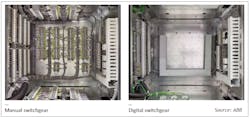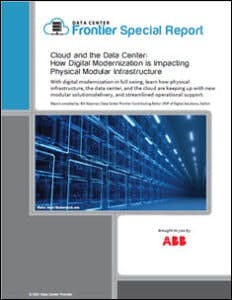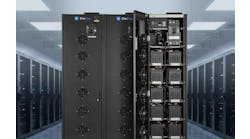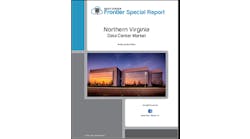From Modernization to Modular: New Design Considerations
Last week, we continued our special report series on how physical infrastructure, the data center, and the cloud are keeping up with new modular solutions delivery, and streamlined operational support. This week, we’ll examine some new designs considerations when looking at modular data center solutions.
Get the full report.
The key to sustainable and profitable growth for colocation providers is to open and lease each phase of the data center as quickly as possible to start leveraging their investment and generating revenue.
For that reason, many colocation providers are building their data centers in smaller blocks to open one section while they begin building the next. This limits the upfront investment and the time before revenue generation begins. It also allows providers to secure tenants earlier, which is essential in competitive, fast-paced environments.
On that note, it’s not always easy to keep pace with a digital market. Two of the biggest reasons typically listed for the problem with data centers are capital and speed of deployment. The traditional brick-and- mortar data center takes a lot of money and time to build. Furthermore, the quick evolution of supporting technologies further entices organizations to work with fast and scalable modular designs.
Outside of those two primary drivers, there are many benefits and reasons listed for why a modular data center approach is selected.
Modular Data Center Key Considerations
In a world driven by digital solutions, ensuring that you can meet the market’s demands has become more complicated. Leaders in the edge, cloud, and data center space have looked to modular designs to ensure that they can meet emerging requirements. Let’s examine some of the key benefits and considerations as it relates to a modular architecture.
Speed of Deployment
Modular solutions have rapid timeframes from order to deployment. As a standardized solution, it is manufactured and ordered, customized, and delivered to the data center site in a matter of months (or less). Having a module manufactured also means that the site construction can progress in parallel instead of a linear, dependent transition. Remember, this isn’t a container — rather a customizable solution capable of quickly being deployed within an environment.
In a study conducted during the DCD>Building at Scale conference in June of 2020, 39 percent of professionals working in the data center industry said that projects are being deployed in under a year, and 66 percent in under 18 months. To keep up with this demand, data center designers will have to select more scalable solutions.
These lead times are significantly shorter than a decade ago, where data center projects stretched well over two years, a build strategy that simply would not meet the data demand of today’s rapidly growing market.
SCALABILITY
To ensure your data center design is modular and scalable, it is essential to select scalable equipment. With a repeatable, standardized design, it is easy to match demand and scale infrastructure quickly. The only limitations on the scale for a modular data center are the supporting infrastructure at the data center site and available land. Another characteristic of scalability is its flexibility by having modules that can be easily replaced when obsolete or if updated technology is needed.
This means organizations can forecast technological changes very few months in advance. So, a cloud data center solution doesn’t have to take years to plan out.
AGILITY
Quickly building a data center environment doesn’t only revolve around the ability to scale. Being agile with data center platforms means being able to meet the needs of an evolving business quickly. Whether that means providing a new service or reducing downtime— modular data centers are directly designed around business and infrastructure agility. Some organizations build their modular environment for the purposes of capacity planning; others leverage modular data centers for their highly effective disaster recovery operations.
MOBILITY AND PLACEMENT
A modular data center can be delivered wherever desired by the end-user. A container can claim ultimate mobility as an ISO-approved method for international transportation. A modular solution is mobile because it can be transported in pieces and reassembled quickly onsite. Mobility is an attractive feature for those looking at modular for disaster recovery, as it can be deployed to the recovery site and be up and running quickly. As data center providers look to take on new offerings, they will be tasked with staying as agile as possible. This may very well mean adding additional modular data centers to help support growing capacity needs.
DENSITY AND PUE
Density in a traditional data center is typically 100 watts per square foot. The space is used very efficiently in a modular solution and features densities of 20 kilowatts per cabinet or more. The PUE can be determined at commissioning, and because the module is pre-engineered and standardized, the PUE’s can be as low as 1.1 – 1.4. The PUE metric has also become an excellent gauge of data center green efficiency. Look for a provider that strives to break the 1.25-1.3 barrier or at least one in the +/- 1.2 range.
All pre-engineered solutions can be easily duplicated or modified to serve most data centers. These electrical power solutions typically include medium- voltage (MV) switchgear, transformers, low-voltage (LV) switchgear, LV switchboards, UPS systems, power distribution units (PDU), remote power panels (RPP), and IT busways — all of which can be combined into integrated skids or eHouses.
EFFICIENCY
The fact that modules are engineered products means that internal subsystems are tightly integrated, resulting in efficiency gains in power and cooling in the module. First-generation and pure IT modules will likely not have efficiency gains other than those enjoyed from a similar containment solution inside
a traditional data center. Having a modular power plant close to the IT servers will save money in costly distribution gear and power loss from being so close. There are opportunities to use energy management platforms within modules, with all subsystems being engineered as a whole.
If a data center is built but not occupied, power losses and inefficiencies from equipment such as uninterruptable power supplies will have a negative impact on the site’s energy efficiency.
By building in modules, data centers can secure tenants for each phase before building the next. If a data center is built but not occupied, power losses and inefficiencies from equipment such as uninterruptable power supplies will have a negative impact on the site’s energy efficiency. Each modular building block should be around 80 percent capacity to optimize efficiencies. Once a module is approximately 80 percent utilized, planning for the next module can begin.
REDUNDANCY
There are a few redundancy architectures to consider. For example, block redundant topology, also known as catcher topology, utilizes a Static Transfer Switch (STS) to transfer the critical load from the primary or active system to the reserve or catcher system. Both hyperscale and colocation data centers use such a topology.
The reserve system can be larger than the active system. Block redundancy can be applied with single cord or dual corded IT loads. If single corded IT loads are used, the static transfer switch is a single point of failure.
For data centers with single corded loads, this topology is usually the most cost-efficient design. With the block redundant topology, an asset utilization of 80 percent is possible, and there is no need to constantly monitor loads to maintain redundancy. The primary disadvantage of this topology is the reliance on static transfer switches, increasing the design’s cost and complexity.
Block redundant topology depends on the catcher or reserve UPS module (or modules) to handle a step load. The active UPS can be loaded to full capacity, and the reserve UPS has no load in normal operation. The reserve system can be larger than the active system. Block redundancy can be applied with single cord or dual corded IT loads. If single corded IT loads are used, the static transfer switch is a single point of failure.
DISASTER RECOVERY AND RELIABILITY
Using reliable and predictable processes delivers many benefits in such a fast-paced build environment. The consistency and standardization of repeatable designs reduce risk, maintain a tight build schedule, and result in reliable prefabricated systems in both performance and maintenance. Once scaled, modular designs are reliable, successfully built, commissioned, and used in previous stages. This build method takes the uncertainty out of a campus expansion plan or the rapid addition of new build centers to an expanding data center campus.
Part of the reason to design a modular data center is for resiliency. Organizations are looking at disaster recovery solutions to remain resilient over the
next 12 months as part of their purchasing plans. This means creating a modular design makes sense. Quickly built and deployed, the modular data center can be built as a means for direct disaster recovery. A modular architecture may be the right solution for those organizations that have to keep maximum uptime.
DIGITALIZATION
There are many benefits to adding intelligence to electrical equipment using open protocols (such as IEC 61850), but for scalability, the most crucial advantage is that it reduces wiring, minimizing installation and commissioning time.
IEC 61850 provides a standardized framework for substation integration that specifies communications requirements, functional characteristics, device data structure, naming conventions for the data, and more.
COMMISSIONING
As an engineered, standardized solution, the data center module can be commissioned where it is built and require fewer steps to be performed once placed at the data center site.
Skid units and electrical house (eHouse) packages enable data centers to address speed to market challenges. Common to traditional construction methods, packaged solutions are typically supplied as individual components with installation and interconnections provided by third parties. Such a solution is an open frame-mounted, compact unit with factory-installed equipment and interconnections. Because they are pre-engineered, prefabricated, and pretested, indoor skid solutions can be built off-site parallel to other construction efforts, accelerating the construction schedule.
The eHouse is a prefabricated, pre-engineered, and pretested system; it is an environmentally controlled building with factory-installed equipment and interconnections. By testing all components before shipping, you ensure that risks in the field are minimized. These units are easy and cost-effective to install and can be placed close to the main loads. Although usually permanently installed, they can be relocated as a colocation center grows or a customer’s IT equipment changes.
Skids units and eHouses can both be used to accelerate construction schedules and quickly expand existing capacity. These one-piece systems can be installed with limited impact on existing operations and reduce onsite work limiting the number of people onsite at an operational data center.
REAL ESTATE
Modules allow operators to build out in increments of power instead of space. Many second-generation modular products feature evaporative cooling, taking advantage of outside air. A radical shift in data center design takes away a data center’s true brick and mortar, placing modules in an outdoor park,
connected by supporting infrastructure and protected only by a perimeter fence. Some modular solutions offer stacking— putting twice the capacity in the same footprint.
Information technology complies with various internal and external standards. Why should the data center be any different? Modular data center deployment makes it possible to quickly deploy standardized modules that allow IT and facilities to finally be on the same page.
Download the full report, “Cloud and the Data Center: How Digital Modernization is Impacting Physical Modular Infrastructure,” courtesy of ABB to learn more about how physical infrastructure, the data center, and the cloud are keeping up with new modular solutions delivery, and streamlined operational support. In our next article, we’ll examine some solution architectures for scalable, modular data center designs. Catch up on previous articles here and here.








